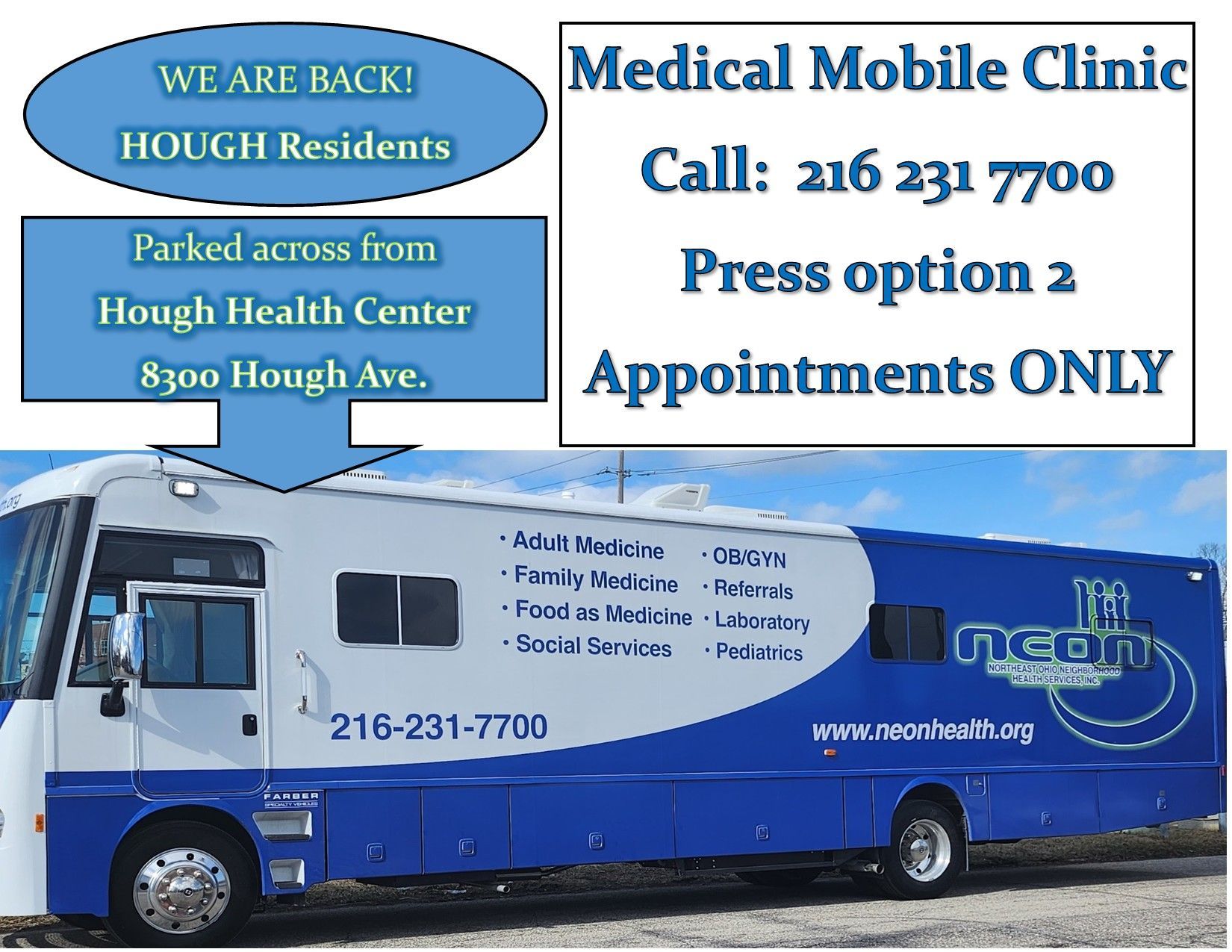WHAT TO EXPECT AT YOUR FIRST MAMMOGRAM

Getting a mammogram for the first time can be a nerve-wracking experience. Being prepared and informed before this important cancer screening can make you feel less anxious.
We Believe in Feeling Good. Feel Good.



Getting a mammogram for the first time can be a nerve-wracking experience. Being prepared and informed before this important cancer screening can make you feel less anxious.
Collinwood Health Center
15322 St. Clair Ave.
Cleveland, OH 44110
Phone: 216-851-1500
Fax: 216-851-0602
Monday thru Friday:
8:30 am - 5:30 pm
Closed Saturday & Sunday
East Cleveland
Health Center
15201 Euclid Ave.
East Cleveland, OH 44112
Phone: 216-541-5600
Fax: 216-541-5658
Monday thru Friday:
8:30 am - 5:30 pm
Closed Saturday & Sunday
Southeast Health
Center
13301 Miles Ave.
Cleveland, OH 44105
Phone: 216-751-3100
Fax: 216-751-2480
Monday thru Friday:
8:30 am - 5:30 pm
Closed Saturday & Sunday
Norwood Health Center
Dental Only
1468 East 55th Avenue
Cleveland, OH 44103
Phone: 216-881-2000
Fax: 216-812-8124
Monday thru Friday:
8:30 am - 5:30 pm
Closed Saturday & Sunday
Superior Health
Center
12100 Superior Ave.
Cleveland, OH 44106
Phone: 216-851-2600
Fax: 216-851-4125
Monday thru Friday:
8:30 am - 5:30 pm
Closed Saturday & Sunday
St. Clair Health
Center
10505 St. Clair Ave.
Suite 101
Cleveland, OH 44108
Fax: 216-441-3968
Monday thru Friday:
8:30 am - 5:30 pm
Closed Saturday & Sunday
Miles Broadway Health Center
9127 Miles Ave.
Cleveland, OH 44110
Phone: 216-325-6544
Fax: 216-441-3968
Social Services Department
Hough Health Center (Main)
Medical Mobile Unit
Parked across from Clinic
APPOINTMENTS ONLY
8300 Hough Ave.
Cleveland, OH 44103
Phone: 216-231-7700
Building Temporarily Closed

NEON Dental Mobile Unit

NEON Medical Mobile Unit
NEON Corporate Office
4800 Payne Avenue
Cleveland, OH 44103
Phone: 216-231-7700
Fax: 216-231-3828